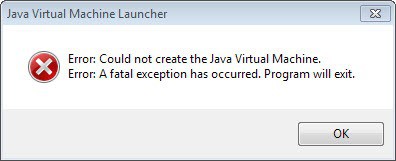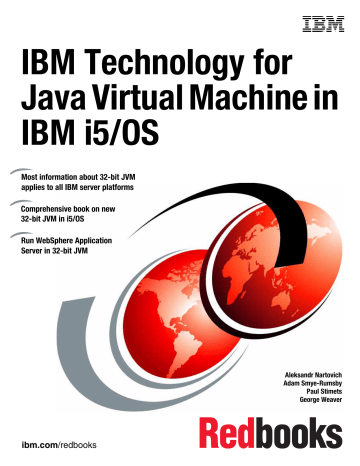
- #Java virtual machine jvm version 1.5 or later archive
- #Java virtual machine jvm version 1.5 or later code
- #Java virtual machine jvm version 1.5 or later zip
This is addressed by the addition of the following two PL/SQL functions to the DBMS_JAVA package, which account for the two kinds of Java session duration: This session lasts until the RDBMS session ends or the session is explicitly terminated by a call to the function dbms_java.endsession_and_related_state. The duration of the longer tier starts when a Java method is invoked in the RDBMS session for the first time. The duration of the shorter tier is the same as before, that is, it starts when a Java method is invoked and ends when JVM exits.

One tier has a longer duration and it encompasses the duration of the other tier. Starting with 11g release 1 (11.1), Java session state is split into two tiers.

This made it impossible to start a new Java session within the same call.
#Java virtual machine jvm version 1.5 or later code
This required modifying Java code and also failed to fully complete the termination of the session before the end of the RDBMS call. The duration of this state used to start with the first invocation of a Java method in the RDBMS session and it used to last till JVM exited, either due to a call to or similar OracleRuntime methods, an uncaught exception, a fatal error, or the end of the RDBMS session. Prior to 11g release 1 (11.1), Java session state was single-tier, which included all values associated with running Java, such as System property values and static variable values, the set of classes loaded during the session and so on. This is not required for running Java clients.
#Java virtual machine jvm version 1.5 or later archive
If you develop and compile your server applications on the client and want to use the same Java Archive (JAR) files that are loaded on the server, then include $ORACLE_HOME/lib/aurora.zip in CLASSPATH. Server Application Development on the Client

#Java virtual machine jvm version 1.5 or later zip
zip file, as follows:įor a Java client using the current release of JDBC, include $ORACLE_HOME/sqlj/lib/runtime12.zipįor a Java2 Platform, Enterprise Edition (J2EE) client using the current release of JDBC, include $ORACLE_HOME/sqlj/lib/runtime12ee.zipįor any JDK client using JDBC 8.1.7 or earlier version, include $ORACLE_HOME/sqlj/lib/runtime.zip In addition to this file, add the appropriate runtime X. You must include the $ORACLE_HOME/sqlj/lib/translator.zip file for SQLJ. JAR Files Included for Clients that Use SQLJ If you are using the accelerator for native compilation, include $JAVA_HOME/lib/tools.jar You must ensure that all elements of CLASSPATH, as defined in the script for Oracle JVM utilities, are present.įor JDK 1.5.2, include $JAVA_HOME/lib/dt.jarįor JRE 1.5.2, include $JAVA_HOME/lib/rt.jarįor any interaction with JDBC, include $ORACLE_HOME/jdbc/lib/ojdbc5.jarįor any client that uses SSL, include $ORACLE_HOME/jlib/jssl-1_2.jar and $ORACLE_HOME/jlib/javax-ssl-1_2.jarįor any client that uses the Java Transaction API (JTA) functionality, include $ORACLE_HOME/jlib/jta.jarįor any client that uses the Java Naming and Directory Interface (JNDI) functionality, include $ORACLE_HOME/jlib/jndi.jar Specifics of CLASSPATH requirements may vary for Oracle JVMs running on different platforms.


 0 kommentar(er)
0 kommentar(er)
